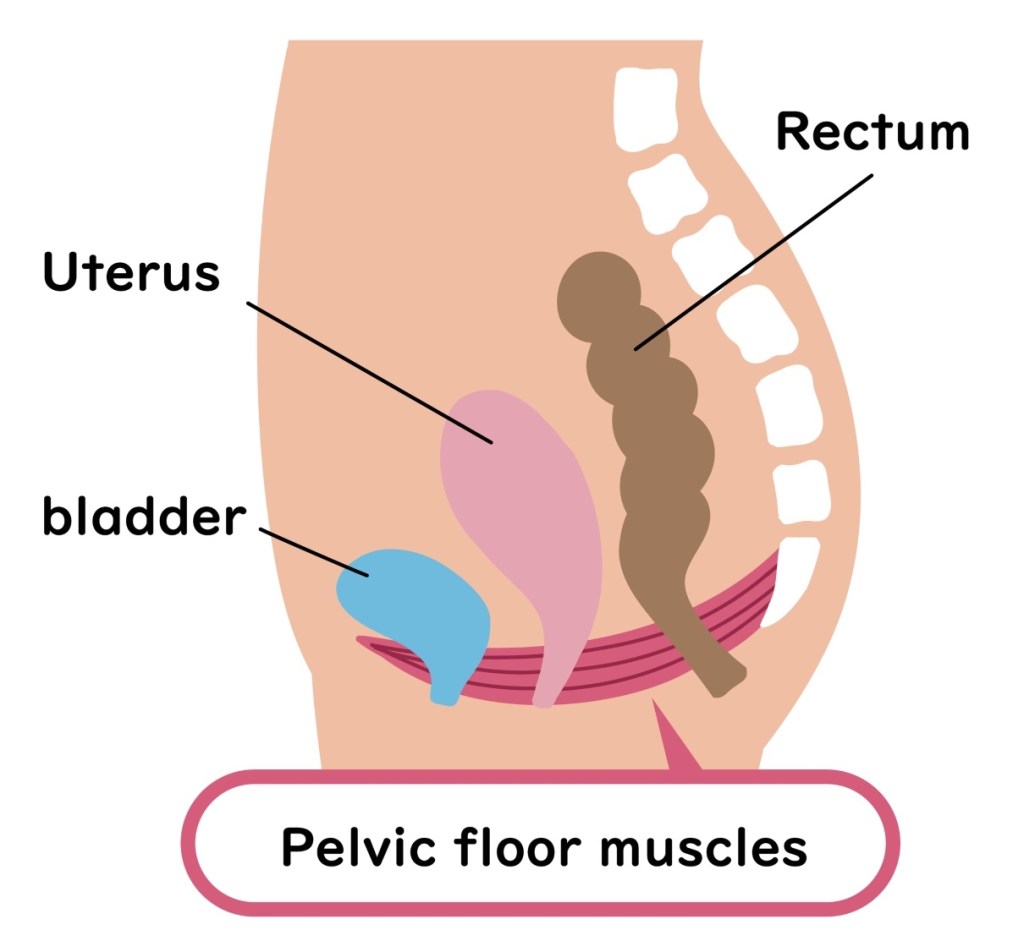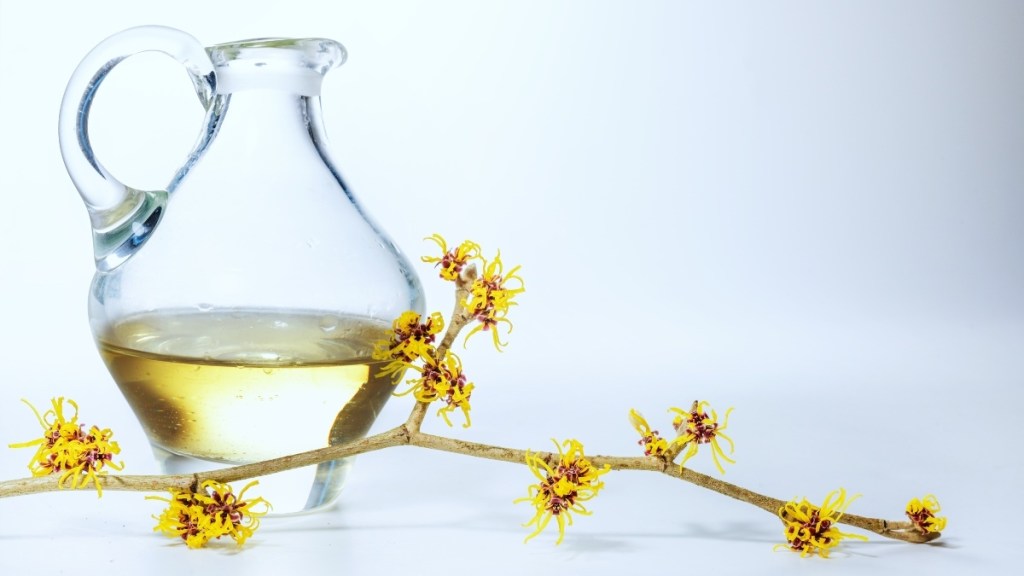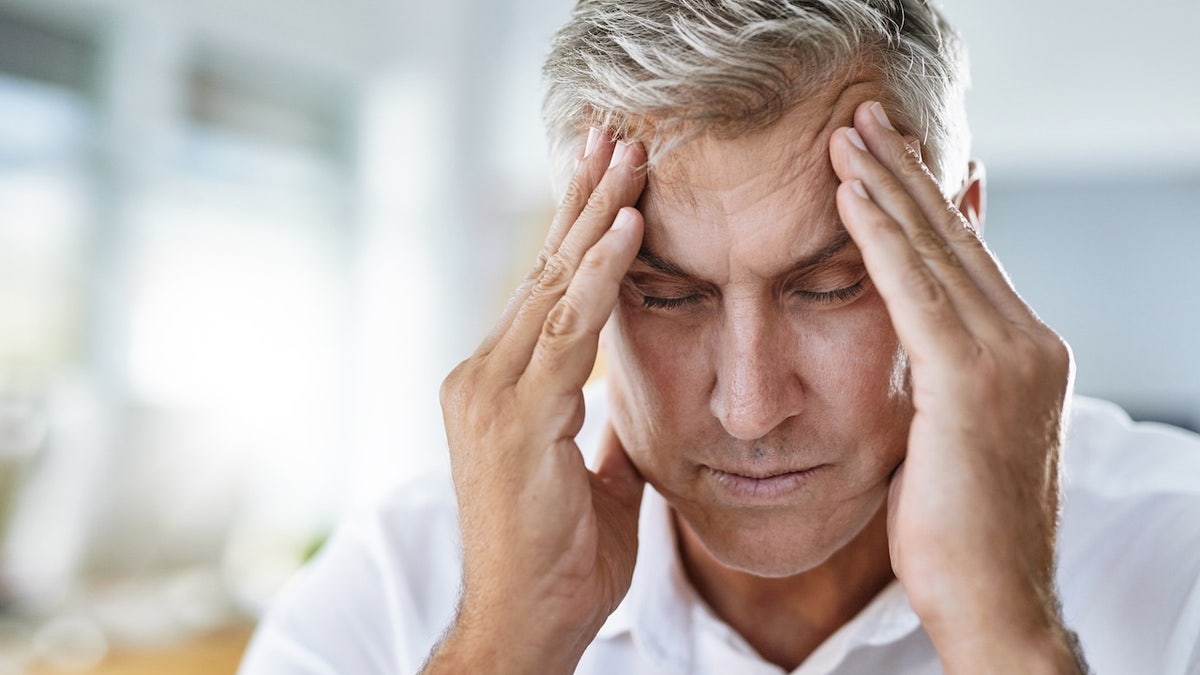Health
MDs Reveal the Home Cures That Soothe Hemorrhoid Itch & Discomfort In Minutes

If you’ve ever had a hemorrhoid flare-up, you know that it can be hard to think of anything other than the intense discomfort that comes with it. One of the most common symptoms of hemorrhoids, along with irritation, bleeding, and soreness is itching. And while the itching is uncomfortable during the day, it can feel even more intense at night. Here, top experts weigh in on why hemorrhoids itch at night — and the simple home cures that work even better than some over-the-counter creams.
What are hemorrhoids?
“Hemorrhoids are a natural part of our body,” says Lynn M. O’Connor, MD, a colorectal surgeon and chief of colorectal surgery at both Mercy Hospital and St. Joseph Hospital in New York. “They’re vascular cushions in our anus and everyone has them.” These anal cushions, aka hemorrhoids or piles, are made up of connective tissue, blood vessels, and a small amount of muscle. Hemorrhoids actually serve an important purpose by helping to shield the skin around the anus from passing stool.
“Normal hemorrhoidal tissue is there to maintain continence. It keeps the rectum closed so that stool doesn’t leak out,” explains gastroenterologist Eric Dinesh Shah, MD, a clinical associate professor of medicine at the University of Michigan in Ann Arbor and a spokesperson for the American Gastroenterological Association.
But problems occur when excess pressure is put on these cushions. This can make the veins and blood vessels in your lower rectum or around your anus painfully swollen and inflamed — what most of us consider “hemorrhoids”. It’s not uncommon. According to the National Institute of Diabetes and Digestive and Kidney Diseases, hemorrhoid flares affect 1 in 20 Americans. And the the issue worsens with age, impacting about half of people over 50.
The two main types of hemorrhoids
There are two types of hemorrhoids: internal, which form in the lining of your anus and lower rectum, and external, which form under the skin around the anus. External hemorrhoids are the more uncomfortable of the two because they’re outside of the anus. There, they can rub against clothing or play host to mucus or stool particles, which can cause irritation and itching.
Internal hemorrhoids tend to be painless, though they can bleed. You’ll likely notice blood on toilet paper or in the toilet after using the bathroom. But if you see blood after wiping or in your stool for a prolonged period of time, it’s time to schedule a visit with your doctor. “With bleeding we can’t always assume it’s hemorrhoids,” Dr. Shah says. “It could be sign of something else, such as inflammatory bowel disease, ulcers, or possibly a sign of cancer. It can be hard to tell without an evaluation, including a colonoscopy, to take a look as to what’s really going on.”
What causes hemorrhoids?
Some of the more common causes of hemorrhoid flare ups include overexerting yourself when having a bowel movement (such as passing too-hard stool or straining due to constipation), lifting heavy things, prolonged sitting (especially on the toilet), pregnancy and being overweight. This puts pressure on your hemorrhoidal tissue, weakening and stretching the veins there.
An under-the-radar trigger? Pelvic floor dysfunction, says Dr. Shah. Your pelvic floor consists of the muscles and the connective tissue that support organs in your pelvis including your bladder, bowel, and reproductive organs. “Pelvic floor dysfunction is caused by poor coordination or weakness of the pelvic floor when straining, which in turn is a common cause of hemorrhoids,” he explains. The condition affects approximately 25% of women in the US. (Click through to see the telltale signs a pelvic floor problem,)

Who is most at risk for hemorrhoids?
More people over 50 experience hemorrhoids because as we age, the connective tissue between the anus and rectum gets weaker, explains Dr. Shah. “Increased pressure, especially if you’re straining to have a bowel movement, can make it easier for an external hemorrhoid to break through.”
What’s more, “older adults are more likely to experience constipation from lack of adequate physical activity, a low-fiber diet or taking certain medications, such as those for high blood pressure and depression,” Dr. Shah explains.
You may also have your family to thank for your hemorrhoids. When researchers reporting in the journal Gut examined cells of nearly one million people, they identified genes in 102 regions of the human genome that increase the risk of hemorrhoids. And the American Academy of Family Physicians says people whose parents had hemorrhoids may be more likely to have the painful, itchy condition, too.
Why do hemorrhoids itch at night?
Let’s start with why hemorrhoids itch in the first place. “If hemorrhoids are inflamed, that can cause itchiness,” says Dr. O’Connor. “You also can experience itchiness from the friction of the toilet paper if you’re wiping excessively. And if hemorrhoids are swollen and hang down, they can rub against clothing.”
When it comes to nighttime itchiness, Dr. O’Connor says one reason it may feel worse is because you’re more fixated on it. “You might be more aware because there’s nothing to distract you from the itching,” she says. “During the day, you’re doing what you need to do and dealing with other things so you might not have time to focus on it that much.”
And while you’re sleeping, you may be unaware you’re scratching the area. That’s a problem, since scratching inflamed hemorrhoids can potentially make the problem worse. “Scratching can cause an itching and scratching cycle that doesn’t stop,” says Dr. Shah, increasing inflammation.
The best ways to soothe hemorrhoid itching
Whether itching and irritation strikes at night or flares up during the day, these simple, natural home remedies can quickly quell symptoms.
Dab on witch hazel
When symptoms flare, pat the problem area with a cotton ball dampened with witch hazel. This natural astringent has been a folk cure for hundreds of years to relieve itching, and research now proves it really is one of the best ways to calm symptoms in seconds. That’s because witch hazel brims with tannic acid. And research in ACS Applied Materials and Interfaces found this compound shrinks swelling on contact and dulls inflamed nerve endings that telegraph pain. (Click through to our sister site to see 8 surprising uses for witch hazel.) Need relief on the go? Reach for a pre-moistened, witch hazel-infused pad. One to try: Tucks Medicated Cooling Pads (Buy from Walmart.com, $7.68)

Relax with a warm sitz soak
A sitz bath, a shallow soak where water only covers your hips and bottom, can provide powerful relief from hemorrhoids. Research in the Women and Birth finds that taking a five-minute break three times a day to soak the affected area in warm, Epsom-infused water relieves pain and itching even better than topicals like Preparation H and Anusol. Not only does the warmth boost circulation to speed healing but the magnesium in Epsom salts also extinguishes pain-triggering inflammation. Tip: Try an Epsom salt blend formulated just for sitz baths. They’re dosed with anti-inflammatory ingredients like aloe, lavender and calendula. One to try: Lansinoh Sitz Bath Salts (Buy from Amazon.com, $12.03)
Tip: When washing and drying the anal area, be extra gentle. “Skin can break down if you’re washing too aggressively,” cautions Dr. O’Connor, which can worsen irritation. You also want to pat the area dry with a soft cloth instead of rubbing in a “flossing” motion. Or you can use a hair dryer on a low cool or warm setting, Dr. O’Connor adds.
Try a citrus plant extract
Taking a potent citrus plant flavonoid called diosmin daily slashes hemorrhoid symptoms up to 67%, according to a review of 10 studies in the British Journal of Surgery. What’s more, it cuts your chances of a future flare up by 50% when taken daily. Diosimin improves blood flow, helping to constrict and heal the overly dilated blood vessels responsible for pain and swelling. Best of all, it begins working in as little as four days.
The best ways to ward off future flare-ups
After experiencing the pain and discomfort of a hemorrhoid flare, odds are you’ll want to do whatever you can to block a future one. Here, the best ways to curb your risk.
Sip a tropical smoothie
Starting each day with a frozen mango fruit smoothie blocks chronic constipation better than with the top MD-recommended treatments like psyllium fiber or laxatives, according to Texas A&M University. The reason? While fiber supplements and laxatives may aid in the treatment of constipation (the number-one underlying cause of hemorrhoids) they don’t fully address all the symptoms, such as intestinal inflammation.
But mangoes’ combination of soluble fiber and inflammation-fighting polyphenols heal the gut, preventing your system from backing up. Simply blend 1 cup fresh or frozen mango cubes with 1 ¼ cup plant or dairy milk. Enjoy! (Click through to our sister site to check out the genius hack for peeling a mango in seconds.)

Top your burger with creamy avocado
The American Society of Colon and Rectal Surgeons (ASCRS) recommends eating between 20 to 35 grams of fiber each day, with for reason: Shoring up fiber intake reduces hemorrhoid symptoms by 50%, suggests a study in The World Journal of Gastroenterology. Fiber helps create softer stools that pass more easily, which reduces the straining that triggers hemorrhoid pain. Some good options: topping your burger with sliced avocado or snacking on a handful of nuts daily.
Drink another glass of H2O
Another reason to chug more water: Adequate H2O blocks hemorrhoid-triggering constipation. Aim to drink about half your body weigh in ounces daily. “If you get 20 to 30 grams of fiber a day and drink plenty of water, you should be able to move your bowels with no problem,” notes Dr. O’Connor. (Click through to our sister site to check out the motivational water water bottle makes it easier to drink up.)
And if you do get that “gotta go” urge, don’t wait to make a trip to the bathroom. Delaying a bowel movement and holding in stool can cause the colon to absorb more water from the stool, making it drier and harder to pass.
Put your feet up when you go
Propping your feet up on a 7″ to 9″ footstool when you have a bowel movement cuts down on straining and toilet time (a top hemorrhoid trigger), a study from The Ohio State University found. When folks used a footstool for two weeks, 71% reported experiencing faster bowel movements and 90% reported less straining. Researchers say propping your feet up mimics a natural squatting position that relaxes the pelvic floor and makes it easier to “go”. Sitting on a toilet on the other hand, creates a bend in the rectum, which makes it more difficult to have complete bowel movement.
Read on for more ways to outsmart constipation, the top cause of hemorrhoid flares:
This content is not a substitute for professional medical advice or diagnosis. Always consult your physician before pursuing any treatment plan.
Woman’s World aims to feature only the best products and services. We update when possible, but deals expire and prices can change. If you buy something via one of our links, we may earn a commission.
Questions? Reach us at shop@womansworld.com
A version of this article originally appeared in our print magazine, Woman’s World.

Health
Most sleep-deprived cities in US revealed in report: Where does yours rank?

Where you live could affect how you sleep at night.
New research from Innerbody revealed that some areas of the country are more sleep-deprived than others.
The study used data from the Centers for Disease Control and Prevention (CDC) and other benchmarks from the 100 most populous cities in the U.S., ranking each on sleep duration and quality.
HERE’S WHY 90% OF AMERICANS DON’T SLEEP THROUGH THE NIGHT, ACCORDING TO EXPERT
For each city, the researchers analyzed the prevalence of five metrics — physical activity, obesity, alcohol consumption, mental distress, and noise and light pollution — all of which can impact sleep quality.
Researchers analyzed how physical activity, obesity, alcohol consumption, mental distress, and noise and light pollution impact sleep across the country. (iStock)
Below are the top 10 most sleep-deprived cities, according to the study results.
- Norfolk, Virginia
- New Orleans, Louisiana
- Detroit, Michigan
- Toledo, Ohio
- Cincinnati, Ohio
- Indianapolis, Indiana
- Philadelphia, Pennsylvania
- Laredo, Texas
- Cleveland, Ohio
- Memphis, Tennessee
The researchers noted that many of these cities are in the eastern half of the U.S., and Ohio appears multiple times.
HEAT EXPOSURE LINKED TO BETTER SLEEP, EXPERTS SAY — HERE’S WHY
While these cities ranked as the most overall sleep-deprived, Honolulu, Hawaii, placed No. 1 for worst sleep duration, with 42.3% of adults getting fewer than seven hours of shuteye per night.
That’s followed by Norfolk, Virginia; New Orleans, Louisiana; Detroit, Michigan; and Huntsville, Alabama.

Norfolk, Virginia, is the No. 1 most sleep-deprived city, research shows. (iStock)
Memphis, Tennessee, ranked No. 1 for the city with the worst sleep quality, followed by New Orleans, Louisiana; Norfolk, Virginia; Cincinnati, Ohio; and Corpus Christi, Texas.
JUST ONE NIGHT OF POOR SLEEP COULD HAVE THESE SURPRISING HEALTH EFFECTS
The study also identified the country’s least sleep-deprived cities, listed below.
- Minneapolis, Minnesota
- Seattle, Washington
- San Jose, California
- Madison, Wisconsin
- Boise, Idaho
- St. Paul, Minnesota
- Denver, Colorado
- Lincoln, Nebraska
- Oakland, California
- San Francisco, California
The researchers commented that cooler temperatures in some of these locations could boost sleep quality.

Newark, New Jersey, suffers the most in sleep quality due to light and sound pollution, the study found. (iStock)
Sleep expert Wendy Troxel, PhD – a RAND Corporation senior behavioral specialist and licensed clinical psychologist in Utah – confirmed in an interview with Fox News Digital that, per her own research, location can have an impact on sleep.
CLICK HERE TO SIGN UP FOR OUR HEALTH NEWSLETTER
“It’s often said that your zip code can influence your health as much as your genetic code,” she said. “Together, these results highlight that this saying holds true for sleep health as well.”
“It’s often said that your zip code can influence your health as much as your genetic code.”
Troxel’s latest research, published in the journal Sleep Health, showed that improving sleep health requires “moving beyond individual-focused approaches and considering broader strategies” in relation to neighborhoods, she said.
This includes investing in neighborhood improvements to enhance sleep quality and overall population health.
For more Health articles, visit foxnews.com/health
“Considering the strong connection between sleep health issues and preventable chronic diseases like cardiovascular disease, diabetes and stroke, our findings suggest that interventions aimed at improving neighborhood conditions could yield significant benefits,” she added.
Health
6 Easy Meal Prep Ideas for Weight Loss You’ll Actually Crave

Use left and right arrow keys to navigate between menu items.
Use escape to exit the menu.
Sign Up
Create a free account to access exclusive content, play games, solve puzzles, test your pop-culture knowledge and receive special offers.
Already have an account? Login
Health
Mini-strokes may cause surprising long-term health issue, experts warn

Prolonged fatigue could indicate poor sleep habits — but it could also be a lingering effect of mini-strokes.
That’s according to a new study from Aalborg University Hospital in Denmark, which was published this week in Neurology, the medical journal of the American Academy of Neurology (AAN).
A mini-stroke — medically known as a transient ischemic attack (TIA) — is a temporary blockage of blood flow to the brain that causes a “short period of symptoms,” according to Mayo Clinic.
STROKE, DEMENTIA AND DEPRESSION SHARE THESE 17 PREVENTABLE RISK FACTORS
The study found that people who experience a TIA are more likely to report prolonged fatigue lasting up to one year.
“Patients with a presumed transient event reported fatigue at levels comparable to a stroke,” lead study author Birgitte Hede Ebbesen, PT, PhD, a physiotherapist at Aalborg University Hospital, told Fox News Digital.
A new study found that people who experience a mini-stroke are more likely to report prolonged fatigue lasting up to one year. (iStock)
The researchers followed 354 people averaging 70 years of age who had experienced a mini-stroke.
Over a 12-month period, the participants reported their level of fatigue in five areas: overall tiredness, physical tiredness, reduced activity, reduced motivation and mental fatigue, according to a university press release.
HEART DISEASE COULD BE PREVENTED WITH THIS ONE SIMPLE TEST
On a scale ranging from 4 to 20 — with 20 being the most fatigued — the participants reported an average score of 12.3 in the two weeks after the mini-stroke, 11.9 at three months, 11.4 at six months and 11.1 at the one-year mark.
Two weeks after the mini-stroke, 61% reported high levels of fatigue. At three, six and 12 months, 54% said they experienced fatigue.

Two weeks after the mini-stroke, 61% reported high levels of fatigue. At three, six and 12 months, 54% said they experienced fatigue. (iStock)
Those who reported prolonged fatigue were twice as likely to have experienced anxiety and/or depression, the study found. Some also reported
“We had encountered fatigue among patients with TIA in clinical settings, so we knew it was there — but the frequency still surprised us,” Modrau told Fox News Digital.
FEELING EXTRA TIRED? THIS VIRUS COULD BE THE CULPRIT, STUDY SUGGESTS
“Long-term fatigue was common in our group of study participants, and we found that if people experience fatigue within two weeks of leaving the hospital, it is likely they will continue to have fatigue for up to a year.”
Based on these findings, Modrau suggests that people diagnosed with a transient ischemic attack should be monitored for lingering fatigue in the ensuing weeks and months.

A mini-stroke — medically known as a transient ischemic attack (TIA) — is a temporary blockage of blood flow to the brain that causes a “short period of symptoms,” according to Mayo Clinic. (iStock)
“This could help us better understand who might struggle with fatigue long-term and require further care.”
The more commonly known symptoms of stroke include face drooping, arm weakness or slurred speech, which usually resolve within a day, according to Modrau. Some patients also reported long-term cognitive issues.
Causes of post-stroke fatigue
Bradley Serwer, an interventional cardiologist and chief medical officer at VitalSolution, an Ingenovis Health company that offers cardiovascular and anesthesiology services to hospitals nationwide, confirmed that fatigue is very common — and sometimes “debilitating” — following a stroke.
“Fatigue is multifactorial and can rarely be attributed to a single cause,” Serwer, who was not involved in the study, told Fox News Digital.
“Fatigue is multifactorial and can rarely be attributed to a single cause.”
The Maryland-based cardiologist shared the following potential reasons for fatigue following a mini-stroke.
Brain healing: “After a stroke, the brain tries to heal itself,” Serwer said. “This process causes the brain to work harder to ‘rewire’ itself, which results in a higher demand for energy. This often leaves patients feeling drained or fatigued.”
Increased inflammation: This can occur due to the immune response following a TIA.

Reduced levels of chemicals like serotonin, dopamine and norepinephrine can result in depression, fatigue or lack of motivation. (iStock)
Lower levels of neurotransmitters in the brain: Reduced levels of chemicals like serotonin, dopamine and norepinephrine can result in depression, fatigue or lack of motivation, according to Serwer.
Sleep disturbances: “These are very common after a stroke and can lead to significant sleep deprivation,” the cardiologist said.
Medications: Drugs used to treat strokes may have adverse side effects, including fatigue. “Betablockers are excellent blood pressure medications and are often prescribed after a stroke or heart attack, but they may cause notable fatigue,” Serwer noted.
Other factors: “Simple tasks may require more mental effort than before the injury,” the cardiologist said. “Depression or anxiety after a stroke can also be a confounding predictor of fatigue.”
CLICK HERE TO SIGN UP FOR OUR HEALTH NEWSLETTER
Potential limitations
The study did have some limitations, the researchers noted.
“It is an observational study and therefore we cannot determine causality,” Modrau said.
“Results are based on self-reported questionnaires, and we cannot be certain that relatives didn’t help fill them out or influence results.”

Drugs used to treat strokes may have adverse side effects, including fatigue. (iStock)
The researchers also did not have information on pre-TIA fatigue levels, although previous studies suggested that it was “much more frequent” after mini-strokes.
Looking ahead, Modrau said she hopes healthcare providers begin to acknowledge lasting fatigue after TIA and provide care pathways for these patients.
For more Health articles, visit www.foxnews.com/health
“Up until now, patients with lasting challenges after TIA have been left alone in many cases,” she told Fox News Digital.
“We as a society should start to acknowledge their difficulties instead of viewing them as ‘the lucky ones,’” she continued. “My aim with this study has been to give these patients a voice – and to start to listen to their struggles.”
-

 Technology1 week ago
Technology1 week agoMexico is suing Google over how it’s labeling the Gulf of Mexico
-

 Politics1 week ago
Politics1 week agoDHS says Massachusetts city council member 'incited chaos' as ICE arrested 'violent criminal alien'
-

 Education1 week ago
Education1 week agoA Professor’s Final Gift to Her Students: Her Life Savings
-

 Politics1 week ago
Politics1 week agoPresident Trump takes on 'Big Pharma' by signing executive order to lower drug prices
-

 Education1 week ago
Education1 week agoVideo: Tufts Student Speaks Publicly After Release From Immigration Detention
-

 News6 days ago
News6 days agoAs Harvard Battles Trump, Its President Will Take a 25% Pay Cut
-

 Culture1 week ago
Culture1 week agoTest Yourself on Memorable Lines From Popular Novels
-

 News1 week ago
News1 week agoWhy Trump Suddenly Declared Victory Over the Houthi Militia













